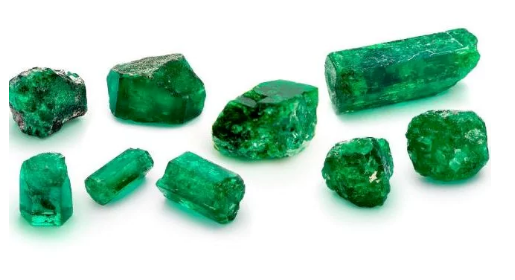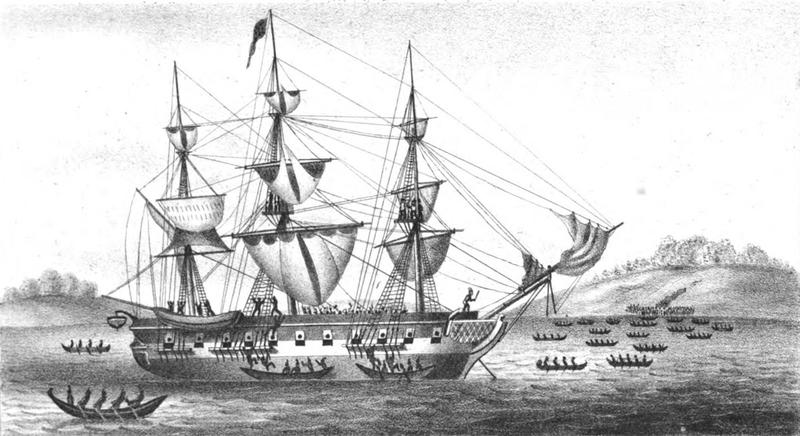HOT NEWS !
Stay informed on the old and most recent significant or spectacular
nautical news and shipwreck discoveries

-
Emeralds unearthed in shipwreck
- On 18/03/2017
- In Auction News
- 0 comments

By Khristian Ibarrola - Lifestyle Inquirer
Shipwrecks are usually home to lost treasures including an extremely rare 887-carat gem.A collection of exquisite emeralds discovered from a 400-year-old shipwreck will be up for auction on April 25, The Telegraph reported.
The impressive glittering set of gems, which consists of more than 20 loose emeralds, is far more expensive than diamonds and will be sold to the highest bidder by Guernsey’s Auction House in New York, USA.
But the collection’s main attraction is the 887-carat “La Gloria,” which is deemed as ”one of the largest museum-quality emeralds in the world.”
The gem is estimated to fetch between $4 million and $5 million.
-
Rich people can tour the Titanic now
- On 18/03/2017
- In Famous Wrecks
- 0 comments

By Christian Gollayan - New York Post
If James Cameron’s 1997 movie wasn’t enough to satisfy your Titanic appetite, you’re in luck.Blue Marble Private, a London-based luxury tour operator, will begin diving excursions of the shipwreck in May 2018.
“Far fewer people have visited the wreck of the Titanic than the number who have been to space or summited Mount Everest,” Elizabeth Ellis, Blue Marvel Private founder, wrote in a press release.
A first-class ticket to the original Titanic was $4,350, and eager tourists will now have to pay the same price, albeit adjusted for inflation, of around $105,000 to experience the famous shipwreck in the North Atlantic Ocean.
The hefty price tag includes a helicopter ride from Newfoundland, Canada to a private yacht, and a submarine ride to the Titanic. So far, nine clients are confirmed for the pricey journey.
-
Does the future of wine making lie underwater ?
- On 14/03/2017
- In Miscellaneous
- 0 comments
By Shireen Khalil - News.com.au
Ever since a treasure trove of 170-year-old Champagne was salvaged by divers from a shipwreck at the bottom of the Baltic Sea in 2010, change has been afoot in the world of wine.A handful of winemakers from around the world have forgone land-ageing techniques and started experimenting with underwater wine ageing. Among the 168 bottles of French bubbly that had aged in near perfect conditions, was Veuve Clicquot Ponsardin, a well-known brand founded in 1772 that still exists today.
One of the four Veuves that were found sold for about $AU21,500. Experts discovered that the historic “Baltic wine” version contained lower alcohol content and higher sugar levels compared to the modern Veuve Clicquot.
Consistent temperature levels, salinity, and low light and oxygen contributed to the results.
Greek winemaker Iannis Paraskevopoulos decided to give it a go, submerging his 2009 Thalassitis dry white the same year the historic bubbly was discovered.
About four years later he dived 18 metres into the beautiful waters of the Aegean Sea near Santorini to rescue his 450 bottles. Sadly, only three survived. Despite the losses, it passed the tasting test, sparking the obvious question — did it taste salty ?
He instantly noted a distinct and disgusting aroma of old fishing nets. Fortunately, it was just the smell of the bottles. The one bottle he opened tasted awesome.
It didn’t take long for Australian winemaker Ben Portet to adopt the unique technique leading him to be the first and only in the country to release an underwater wine range.
Except he did it differently; rather than resorting to the whims of ocean and ageing individual bottles, he submerged entire barrels of wine in freshwater (via a rain water tank) held down by weights at his family-owned Yarra Valley winery, Dominique Portet.
-
Les secrets révélés par l’épave de Phips...
- On 07/03/2017
- In Festivals, Conferences, Lectures
- 0 comments

De Charlotte Paquet - Le Manic
Vingt ans après la fin des fouilles subaquatiques qui ont permis la découverte de l’épave du Elizabeth and Mary à Baie-Trinité, la Société historique de la Côte-Nord prépare l’exposition Phips, 1690 : vestiges de tempêtes pour faire connaitre le sort des artefacts prélevés et les secrets qu’ils ont révélés.
En collaboration avec le Centre de conservation du Québec, la Société historique a bien l’intention de prouver que même 20 ans plus tard, l’épave continue encore et toujours de raconter l’histoire.
Le navire Elizabeth and Mary faisait partie de la flotte de l’amiral William Phips. En novembre 1690 et à la hauteur de Baie-Trinité sur le fleuve Saint-Laurent, il avait été frappé durement par une tempête hivernale alors qu’il se dirigeait vers Boston à son retour de Québec. Trois autres navires étaient disparus lors du même événement.
-
Sale of Anglesey shipwreck treasure put on hold
- On 03/03/2017
- In Famous Wrecks
- 0 comments

By Gareth Wyn-Williams - The Daily Post
Plans to put treasure from a 19th-century shipwreck up for auction have been put on hold amid calls that they should instead be put on public display.The widow of one of the divers who found the items at the Anglesey wreck of the Royal Charter had planned to sell the gold and jewellery, but other members of the group say they should be shown on the island.
The items, which have been valued at £4,000, were unearthed in the 1970s at the sunken ship, which smashed against rocks off Moelfre in a force 12 storm in October 1859.
John Leyland’s widow had planned to sell six sovereigns, one half sovereign, a nugget pin and eternity and signet rings at auction next month.
But auction house Halls has confirmed that the sale has been postponed, after some of the other divers called for the items to instead go on public display.
Peter Day, from Tynygongl near Benllech, was one of the divers who visited the wreck in 1972. He said: “We had an agreement with the authorities at the time that the group would be the custodian of the gold, and that no individual from the group could offer the items for sale without the express permission of all concerned.
“I and the other members of the group don’t want to sell the items to private individuals. “We think they should be added to the display at the RNLI Seawatch Centre at Moelfre, near the location of the tragedy.”
-
« La Nymphe » repose ici depuis 223 ans
- On 02/03/2017
- In Underwater Archeology
- 0 comments

De Ouest France
Dans les premiers jours de 1794, la frégate à la tête d’une petite armada républicaine chargée de reprendre l’île de Noirmoutier aux Vendéens, atteinte par une batterie côtière, s’échoue.Dépecée en partie puis longtemps oubliée, son linceul de sable est localisé en 2014. Michel Vrignaud a plongé avec les découvreurs. Il est en conférence ce soir à La Ferrière.
En juin 2014, deux plongeurs passionnés localisent un tumulus de cailloux et de sable dont la forme pourrait être celle d’une coque : 47 m de long et de 5 à 10 m de large.
En août, Michel Vrignaud de l’association vendéenne de vidéo et d’archéologie sous-marine (AVVAS) plonge avec les découvreurs. Il reste 50 minutes, à filmer et brasser les premières hypothèses sur l’histoire de l’épave. Un moment inoubliable pour cet érudit de l’épopée vendéenne.
Touchée au grand hunier et percée à plusieurs reprises par les boulets vendéens, la frégate aux 26 canons se brise doucement devant le Bois de la Chaise.
La première nuit se passe à sauver l’équipage et sortir la poudre. L’île est reprise, les Vendéens capitulent contre parole de vie sauve, on connaît la fin tragique des insurgés, exécutés par lots au sortir de l’église.
-
Wartime shipwreck comes up for sale
- On 24/02/2017
- In World War Wrecks
- 0 comments

By Janet Hall - Northumberland Gazette
If you’re looking for a gift for the man who has everything, how about the remains of a ship sunk by a U-boat during the Second World War ?The wreck of the Athelduke, a 8,966-ton British diesel motor tanker which lies at the bottom of the North Sea near the Farne Islands, has come up for sale.
The tanker was built in 1929 by R Gordon and Company of Port Glasgow, Scotland. Owned by the United Molasses Company of London, she operated out of the port of Liverpool.
Requisitioned by the Admiralty during the Second World War to augment the ships of the Royal Fleet Auxiliary, she was part of convoy FS-1784 transporting 12,600 tons of molasses from Port Everglades, Florida, via Loch Ewe to Salt End, Hull, when, at 5.32pm on April 16, 1945, she was torpedoed and sunk by U-1274.
A survivor’s report confirmed that Athelduke was hit by two torpedoes. The first struck the vessel on the port side of the cross bunker tank and the second on the port side of the near cargo tank.
The bunker caught fire and she started to sink, although she took 12 hours to sink completely. Seeing the danger, Captain Joseph Errett ordered his crew to abandon ship, which they did by way of two boats.
The master, 41 crew members and four gunners were picked up by the British merchantman SS King Neptune and were landed in Grimsby the following day.
-
Shipwreck hunters pursue 'Holy Grails'
- On 24/02/2017
- In People or Company of Interest
- 0 comments

By Tom Banse - NW News Network
Shipwrecks along the Pacific Northwest coast number in the thousands. A handful have become the long-running obsessions of a cadre of shipwreck buffs.Arguably, the greatest mystery among many in the region to chew on is: where is the Tonquin ?
Scuba diver Tom Beasley of Vancouver, Canada, has been involved in the search for her since 1982. "The Tonquin is one of holy grails of undiscovered shipwrecks in the Pacific Northwest,” he said.
“For me, the Tonquin is the top of that list." The merchant ship was owned by New York millionaire John Jacob Astor. In 1811, the Tonquin carried the fur traders who set up Fort Astoria, the first permanent American settlement on the Pacific Coast.
The Tonquin then sailed on to Vancouver Island where the captain insulted a native chief. That set off a battle in which most of the crew was killed. A survivor retreated to the ship's powder magazine and blew everything up to avoid capture.
Beasley said this likely happened near present-day Tofino or in a bay northwest of Port Hardy, British Columbia. "There is a lot more searching that needs to be done,” Beasley said.
“These are dynamic bodies of water. In the Tofino area, the prime location is probably an area that has dynamic sand. If the wreck is there, it could be covered one day and uncovered two years later." "I like it because it is a fascinating period of cultures coming together and first meeting.
And the conflict and interaction of those cultures," Beasley said. "It's a fascinating, little-known story that should be known more, mystery and adventure."
Beasley serves on the board of the Underwater Archeological Society of British Columbia when he is not earning his living as an employment attorney.
After decades of searching, a rusty anchor recovered from the sandy bottom near Tofino in 2003 is the most intriguing clue found so far.
Beasley described the anchor as oddly encrusted with blue-green trade beads, which dated to the fur trading era when the Tonquin sank. But no markings conclusively link the anchor to the lost barque.
